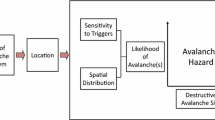Abstract
In the twenty-first century, the goals of mankind are evolving from rising prosperity to attaining long-range sustainable survival in an acceptable state. Such change will lead to a paradigm shift predicted by Thomas Kuhn. This situation motivates two novel generalized systems, Risk-Constrained Optimization (RCO) and its derivative, Risk-Constrained Optimization/Decision Network (RCO/DN). RCO aims for flexible and robust strategies across large ranges of scenarios and risks. It assumes that for any “serious” (complex and long-range) planning and decision-making problem, externalities are important and uncertainty is radical. Therefore, it rejects the very concept of the correct or the best strategy, replacing it with a strategy that is the most acceptable to decision-maker(s). RCO considers decision-support systems, models, and algorithms to be tools of analysis, rather than methods of selection of the best. It replaces the artificial and risky paradigm of maximization by a cautious natural and evolutionary paradigm of catastrophe avoidance. RCO filters out the worst and riskiest candidate strategies, leaving for judgmental selection a small set of flexible, robust, and reasonably safe strategies. For that purpose, RCO employs enhanced stochastic multiscenario (ESMS) models, transforming them into optimizing filters. It is important that this operation is achieved in accordance with a new principle—changing the overall solution by affecting the values of scenario-specific, rather than general, outcome variables. Furthermore, RCO screens decisions and strategies by several synthetic criteria in a framework of novel strategic frontiers. Thus, RCO embeds ESMS into an ensemble of mutually supporting risk management techniques, legitimizing high-level analytical use of a computer plus optimization model combination.



Similar content being viewed by others
References
Arrow KJ (1953) Hurwicz’s optimality criterion for decision-making under ignorance. Technical Report 6, Department of Economics and Statistics, Stanford University
Arrow KJ, Hurwicz L (1972) An optimality criterion for decision-making under ignorance. In: Carter CF, Ford JL (eds) Uncertainty and expectations in economics. Basil Blackwell, Oxford
Charness A, Cooper WW (1959) Chance-constrained programming. Manage Sci 6:73–79
DeLoach JW (2000) Enterprise-wide risk management: strategies for linking risk and opportunity. Prentice Hall, London
Gomory RE (1963) An algorithm for integer solutions to linear programs. In: Graves RL, Wolfe P (eds) Recent advances in mathematical programming. McGraw-Hill Book Company, New York
Kahneman D (2011) Thinking fast and slow. Farrar, Straus and Giroux, New York
Keynes JM (1921) A treatise on probability. Macmillan, London
Kuhn TS (1962) The structure of scientific revolutions. University of Chicago Press, Chicago
Lempert RJ et al (2006) A general, analytic method for generating robust strategies and narrative scenarios. Manage Sci 52(4):514–528
Lindner-Dutton L, Jordan M, Karwan M (1994) Beyond mean time to failure: Praxair’s novel reliability modeling techniques keep gas flowing to customers. OR/MS Today 21(2):30–33
Luce RD, Raiffa H (1957) Games and decisions. Wiley, New York
Madansky A (1962) Methods of solution of linear programs under uncertainty. Operations Research 10:463–471
Makarov AA and Melentyev LA (1973) Methods of studying and optimizing the energy sector. Novosibirsk, USSR: Nauka. (Maкapoв AA и Meлeнтьeв ЛA (1973) Meтoды иccлeдoвaния и oптимизaции энepгeтичecкoгo xoзяйcтвa. Hayкa: Hoвocибиpcк, CCCR.)
Masch VA (2004) Return to the natural process of decision-making leads to good strategies. J Evolut Econ 14(4):431–462
Masch VA (2010) An application of risk-constrained optimization® (RCO) to a problem of international trade. Int J Oper Quant Manag 16(4):415–465 (Available at rcosoftware.com)
Masch VA (2012) The RCO/DN Approach to planning of urban growth boundaries. J Urban Manag 1(2):3–17
Raiffa H (1968) Decision analysis: introductory lectures on choices under uncertainty. Addison-Wesley, Reading
Ravetz J (2009) Preface. In: Bammer G, Smithson M (eds) Uncertainty and risk—multidisciplinary perspectives. Earthscan, London
RiskMetrics™ (1996) Technical document. Morgan Reuters, New York
Roy AD (1952) Safety first and the holding of assets. Econometrica 20(3):431–450
Senge PM (1990) The fifth discipline. Doubleday Currency, New York
Schoemaker PJH, Robert EG (2002) Profiting from uncertainty. Strategies for succeeding no matter what the future brings. The Free Press, New York
Taleb NN (2012) Antifragile. Random House, New York
US Patent (1999) # 5,930,762 of July 17
Van Cleveld M (1985) Command of war. Harvard University Press, Cambridge, MA
Williamson T (2010) Reclaiming the Imagination. International Herald Tribune. August 17, 8
Acknowledgments
The author is grateful to two reviewers for their comments that proved very useful. He also greatly appreciates numerous good comments and suggestions of the co-editors of this journal, J. H. Lambert and I. Linkov. Of course, the author is completely responsible for the remaining flaws of the paper, and views expressed in it are his own.
Author information
Authors and Affiliations
Corresponding author
Rights and permissions
About this article
Cite this article
Masch, V.A. Extensions of stochastic multiscenario models for long-range planning under uncertainty. Environ Syst Decis 33, 43–59 (2013). https://doi.org/10.1007/s10669-013-9433-x
Published:
Issue Date:
DOI: https://doi.org/10.1007/s10669-013-9433-x




